Double Bass 5 strings by Johann Georg Thir
Vienna, 1750
Catalog 71 – Violone (Double bass) with 5 strings – Johann Georg Thir – Wien, 1750
 |
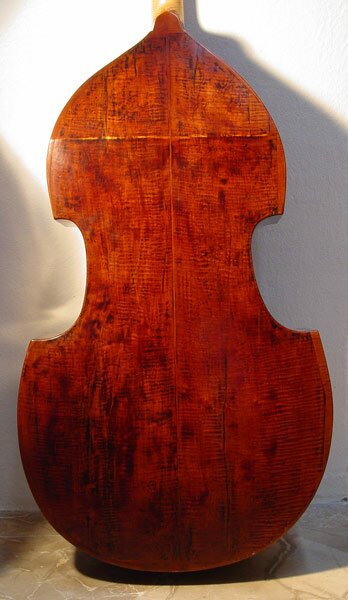 |
 |
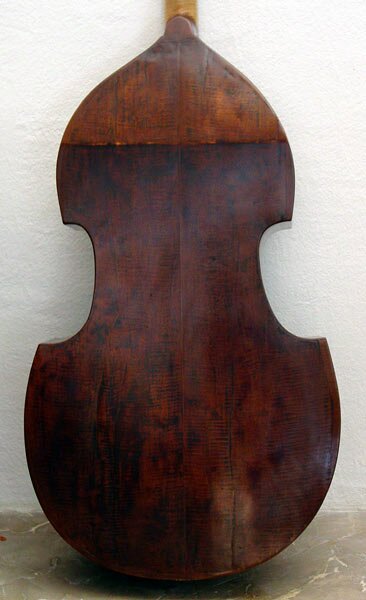 |
This violone or double bass merit our attention. As a rule, double basses are made from low quality woods, the finer planks being reserved for the more expensive violins and violoncelli. This bass, however, has the finest highly-figured spruce for the top and extremely highly figured maple for the sides and back. The fact that the leading luthier in Vienna at that time, Johann Georg Thir, was given the commission for a double bass and that he used the finest spruce and maple available imply that this was a special commission from some very prominent client, someone like the Emperor himself, or Prince Esterhazy, who at the time was the wealthiest man in Europe, or Graf Lobkowitz, who maintained a solid musical establishment in his palace.
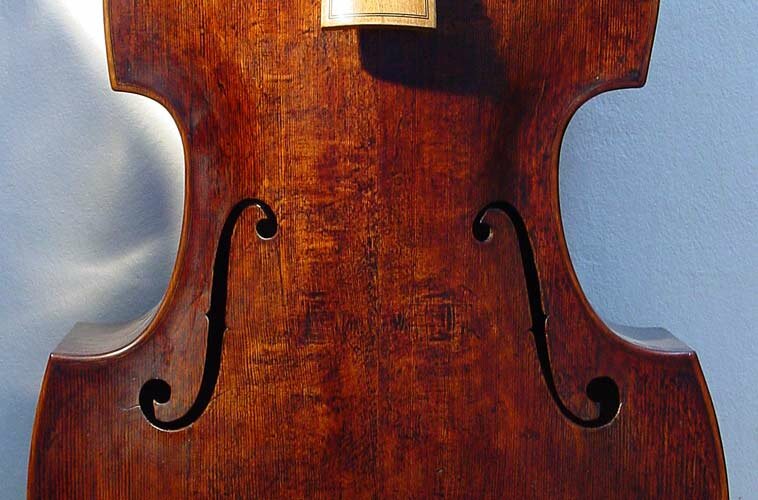 |
|
 |
|
 |
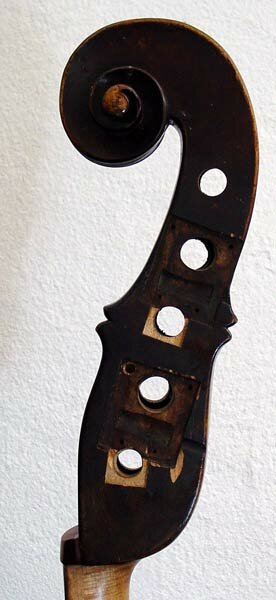 |
During a certain period in history – the end of the 18th to the beginning of the 19th Centuries – the Viennese double basses used a different tuning: F-A-D-F#-A. As Vito Liuzzi wrote on his site
“Viennese Tuning: F,A,D,F#,A was a type of double bass tuning used during the Classical Period (1760-1820) predominantly in the Austro-German lands. Although there were other tuning systems at the time, this one was almost exclusively used by the bassists in Vienna and surrounding areas, resulting that Mozart and Haydn wrote most of their bass parts specifically for this setup.
The music legacy intended for the Viennese tuning consists of over forty concertos and hundreds of chamber pieces. The authentic performance of the more advanced solo pieces intended for this tuning is unfortunately not possible on the modern orchestra bass. The technical and idiomatic difficulties that this literature presents make this music very difficult and often impossible to arrange for the modern bass. Thus, only a fraction of the solo literature from this repertoire is performed today.
The artistic and performing merits of this system however are numerous, and in many aspects indeed offer an advantage over the modern bass technique and its literature. Since the use of the Viennese tuning is presently limited only to the specialists and scholars, the goal of this site is to further promote this system among bassists and wider audiences alike.
The early history of the Viennese tuning is sparsely documented, and unfortunately not as well researched either. It is believed that this tuning system originates in the Baroque period, at the time when the period bassists have started emulating the Baroque lute and viol tunings. Those period lutes and viols have used the tuning variants where a third was common among the middle strings, and the fourths have spanned the upper and the lower strings.
The first documented instance of the Viennese tuning appears in the Musikalisher Schlissl by Johann Jakob Prinner (1677), although in the F,A,D,F#,H variant. Later on, the first documented appearance of the tuning in its common Classical period form (F,A,D,F#,A), is cited by James Talbot (1692). What particular music was performed on those baroque tunings remains to be further investigated. The Viennese tuning in the form we know and use today is associated with the beginning of the early Classical period – late 1750ties – in Vienna and Austro-German lands.
The first know repertoire for this system consisted only of several easy chamber pieces, written in popular folk idiom. As the development of the forms and harmony have progressed in the Classical period, so has the use of the Viennese bass too. The first solos for this bass have appeared in symphonic repertoire (ex. Haydn symphonies 6,7,8) during 1760ties. This freedom to experiment with bass solos in ensembles has culminated in the appearance of the first bass concerti, along with the first solo chamber works, at about the same time.
During the later part of the Classical period the Viennese tuning coexists together with the modern E,A,D,G system for a while, and than slowly fades in disuse. It is assumed that Schubert used Viennese tuning in his famous Trout quintet (1819), and we still see the bass concertos written by Johan Hindle in 1817 to 1818. However, by early to mid 19th Century the Wenzel Hause method and his system (essentially the modern E,A,D,G tuning) take primacy, and remain in use until today.
The reason why Viennese tuning fell in disuse may lay in the fact that it was somewhat limited to the D major and closely related tonalities, which are well suited and easily executable on the D platform. Thus when the expansion of the harmonic language occurred in the mid Romantic period, it has become too cumbersome for bassists to use solely a “tuning of few tonalities”. This commonly mentioned thesis however does not explain how did the bass players perform Mozart’s no. 39 (Eb maj) and no. 40 (G min) symphonies – both very unsuitable for D setup? Considering this enigma, there may be a possibility that the Viennese tuning was actually an elite system used only by the best players in its later years, and when that generation of bassists left the field, so did the noble system together with them.”
Immediately after restoration, this bass by Thir took part in the concert of June, 2008 at the Castle of Kremsegg, Austria.
We are very pleased!
 |
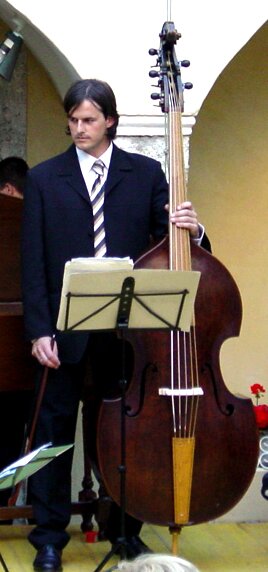 |
Martin Hofinger with the Johann Georg Thir double bass
 |
 |
Martin Hofinger with the Johann Georg Thir violone during a performance in the Cappella Sistina in the presence of Pope Benedict XVI (January, 2009).
| Body length | 1115 mm |
|
Upper width
|
490 mm |
| Middle width | 330 mm |
| Lower width | 630 mm |
| Rib height | 215 mm |
| String length | 1090 mm |